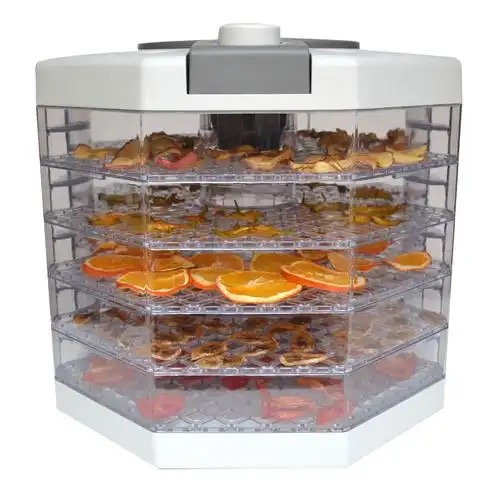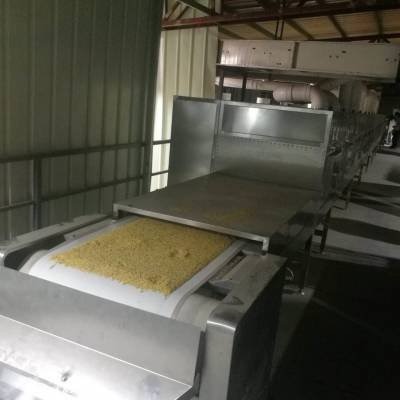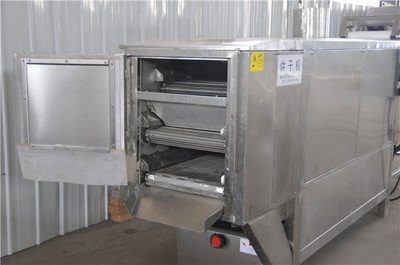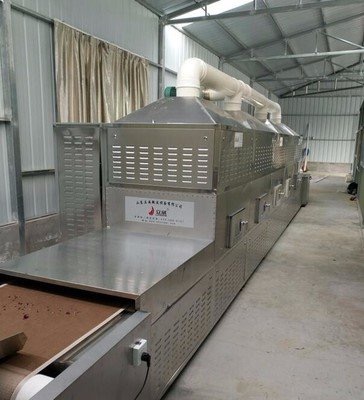
Content Menu
● Understanding Food Drying
● Heat Pump Dryers
>> Advantages of Heat Pump Dryers
● Condensing Dryers
>> Advantages of Condensing Dryers
● Key Differences Between Heat Pump and Condensing Dryers
● Applications in Food Processing
>> Specific Applications of Heat Pump Dryers
>> Specific Applications of Condensing Dryers
● Choosing the Right Dryer for Your Needs
>> Factors to Consider
● Conclusion
● Related Questions and Answers
>> 1. What types of food can be dried using heat pump dryers?
>> 2. How do I maintain a heat pump dryer?
>> 3. Are condensing dryers suitable for all types of food?
>> 4. What is the average drying time for fruits in a heat pump dryer?
>> 5. Can I use a condensing dryer for bulk drying of grains?
In the world of food processing, drying is a crucial step that significantly impacts the quality, shelf life, and flavor of food products. As a leading manufacturer of food drying machines in China, we specialize in providing OEM services to international brands, wholesalers, and producers. This article will explore the differences between heat pump dryers and condensing dryers, focusing on their applications in food drying, efficiency, and technology.
Understanding Food Drying
Food drying is a method of preserving food by removing moisture, which inhibits the growth of bacteria, yeasts, and molds. The drying process can enhance flavors, reduce weight for easier transport, and extend shelf life. Various drying technologies exist, but heat pump and condensing dryers are among the most popular in the industry.

Heat Pump Dryers
Heat pump dryers utilize a refrigeration cycle to extract moisture from food products. They work by circulating air through a heat exchanger, where the air is heated and then passed over the food. The moisture evaporates and is then condensed back into water, which is collected and removed from the system.
Advantages of Heat Pump Dryers
1. Energy Efficiency: Heat pump dryers are known for their low energy consumption. They can operate at lower temperatures, which is ideal for sensitive food products that may be damaged by high heat.
2. Consistent Drying: These dryers provide uniform drying conditions, ensuring that all food items are dried evenly. This is particularly important for maintaining the quality of the final product.
3. Environmentally Friendly: By using less energy and producing less waste heat, heat pump dryers are a more sustainable option compared to traditional drying methods.
4. Versatility: Heat pump dryers can be used for a wide range of food products, including fruits, vegetables, herbs, and meats.
Condensing Dryers
Condensing dryers, on the other hand, operate by using hot air to evaporate moisture from food products. The moist air is then cooled, causing the water vapor to condense into liquid form, which is collected and removed.
Advantages of Condensing Dryers
1. Simplicity: Condensing dryers are generally simpler in design and operation compared to heat pump dryers. This can make them easier to maintain and operate.
2. Faster Drying Times: These dryers can achieve higher temperatures, which can lead to faster drying times for certain products.
3. Lower Initial Cost: Condensing dryers often have a lower upfront cost compared to heat pump dryers, making them an attractive option for smaller operations.
Key Differences Between Heat Pump and Condensing Dryers
1. Energy Consumption: Heat pump dryers are more energy-efficient, while condensing dryers may consume more energy due to higher operating temperatures.
2. Drying Temperature: Heat pump dryers operate at lower temperatures, making them suitable for delicate food items. Condensing dryers can reach higher temperatures, which may not be suitable for all food types.
3. Drying Time: Condensing dryers typically offer faster drying times, but this can come at the cost of product quality for sensitive items.
4. Cost: While heat pump dryers may have a higher initial investment, their energy savings can lead to lower operational costs over time. Condensing dryers may be cheaper upfront but can incur higher energy costs.
5. Maintenance: Heat pump dryers may require more complex maintenance due to their advanced technology, while condensing dryers are generally easier to maintain.
Applications in Food Processing
Both heat pump and condensing dryers have their unique applications in the food industry. Heat pump dryers are ideal for drying fruits and vegetables, where maintaining flavor and nutritional value is essential. They are also suitable for drying herbs and spices, which can lose their potency if exposed to high temperatures.
Condensing dryers, with their faster drying capabilities, are often used for products like meats and fish, where quick drying is necessary to prevent spoilage. They can also be effective for bulk drying of grains and legumes.

Specific Applications of Heat Pump Dryers
Heat pump dryers are particularly beneficial for drying sensitive products such as:
1. Fruits: Berries, apples, and bananas retain their color and flavor better when dried at lower temperatures.
2. Vegetables: Carrots, peas, and bell peppers can be dried without losing their nutritional value.
3. Herbs: Basil, oregano, and thyme maintain their essential oils and flavors when dried gently.
Specific Applications of Condensing Dryers
Condensing dryers excel in applications that require rapid moisture removal, such as:
1. Meats: Jerky production benefits from the quick drying process, which helps preserve the meat.
2. Fish: Seafood can be dried quickly to prevent spoilage and maintain quality.
3. Grains: Bulk drying of grains like rice and corn can be efficiently handled by condensing dryers.
Choosing the Right Dryer for Your Needs
When selecting a dryer for food processing, it is essential to consider the specific requirements of your products. Factors such as moisture content, desired drying time, and energy efficiency should all be taken into account.
For businesses focused on sustainability and energy savings, heat pump dryers may be the best choice. However, for those needing quick drying solutions at a lower initial cost, condensing dryers could be more suitable.
Factors to Consider
1. Product Type: Different food products have varying moisture content and drying requirements. Understanding these needs is crucial for selecting the right dryer.
2. Production Volume: High-volume operations may benefit from the efficiency of heat pump dryers, while smaller businesses might find condensing dryers sufficient for their needs.
3. Budget: Initial investment and long-term operational costs should be evaluated to determine the most cost-effective solution.
4. Space Availability: The physical footprint of the dryer and the layout of the production facility can influence the choice of equipment.
5. Regulatory Compliance: Ensure that the chosen drying method meets food safety and quality standards in your region.
Conclusion
In conclusion, both heat pump and condensing dryers offer unique advantages and applications in the food drying industry. Understanding the key differences between these technologies can help food manufacturers make informed decisions that align with their operational goals and product quality standards.

Related Questions and Answers
1. What types of food can be dried using heat pump dryers?
Heat pump dryers are suitable for a variety of foods, including fruits, vegetables, herbs, and meats.
2. How do I maintain a heat pump dryer?
Regular cleaning of filters, checking refrigerant levels, and ensuring proper airflow are essential for maintenance.
3. Are condensing dryers suitable for all types of food?
While condensing dryers can be used for many foods, they may not be ideal for delicate items that require lower drying temperatures.
4. What is the average drying time for fruits in a heat pump dryer?
Drying times can vary, but fruits typically take between 6 to 12 hours, depending on the type and moisture content.
5. Can I use a condensing dryer for bulk drying of grains?
Yes, condensing dryers can effectively dry grains, but monitoring moisture levels is crucial to prevent over-drying.












